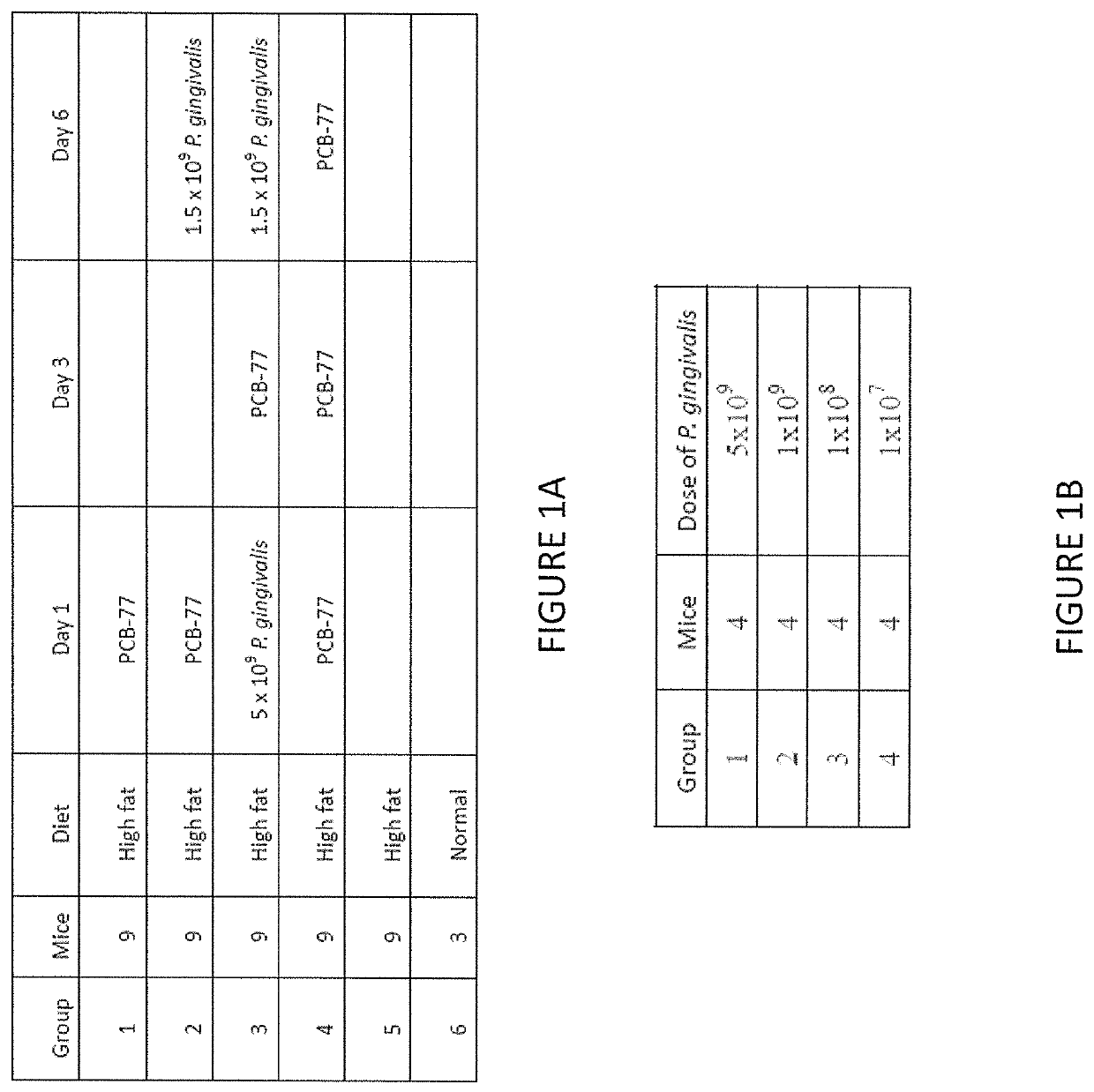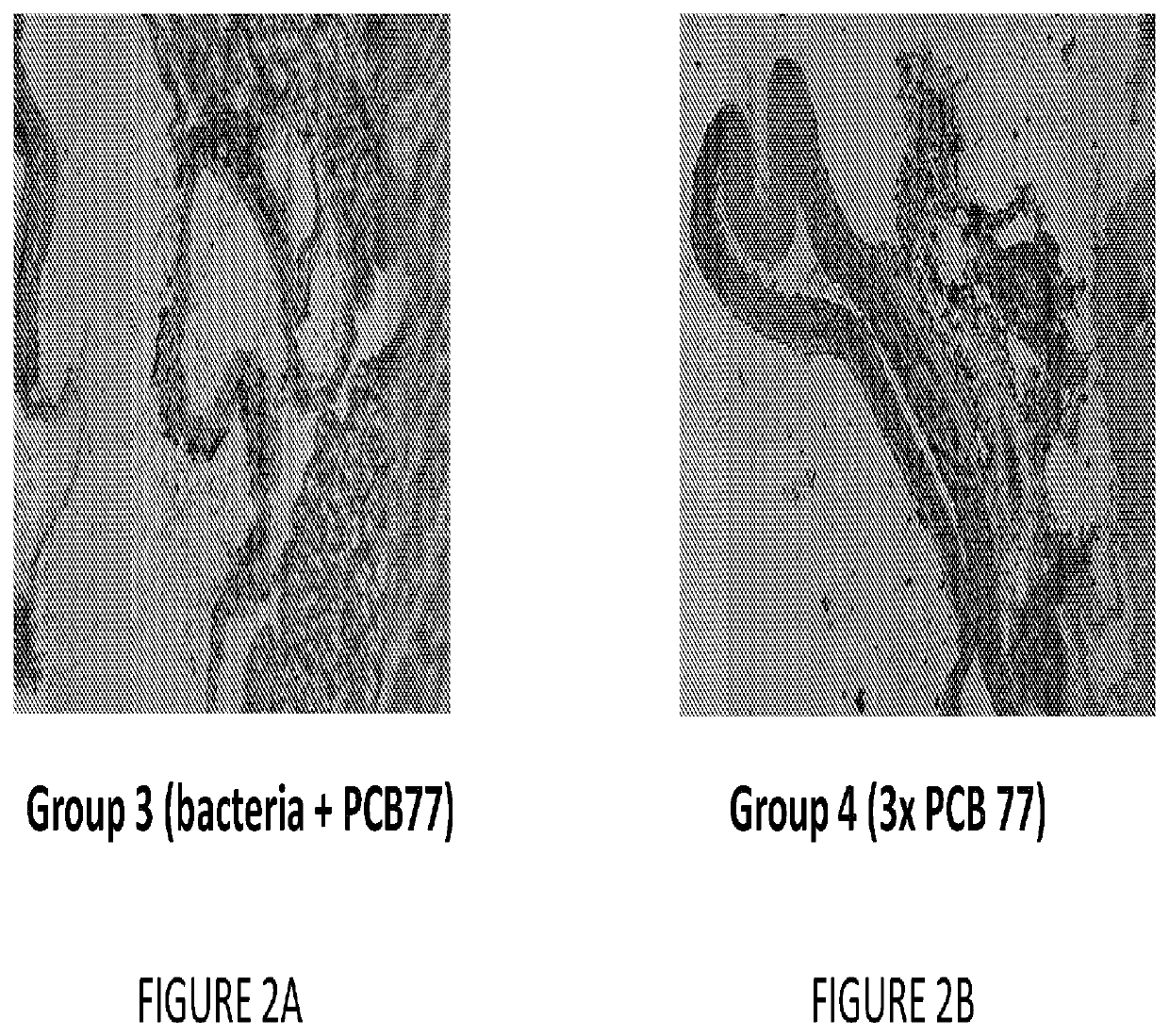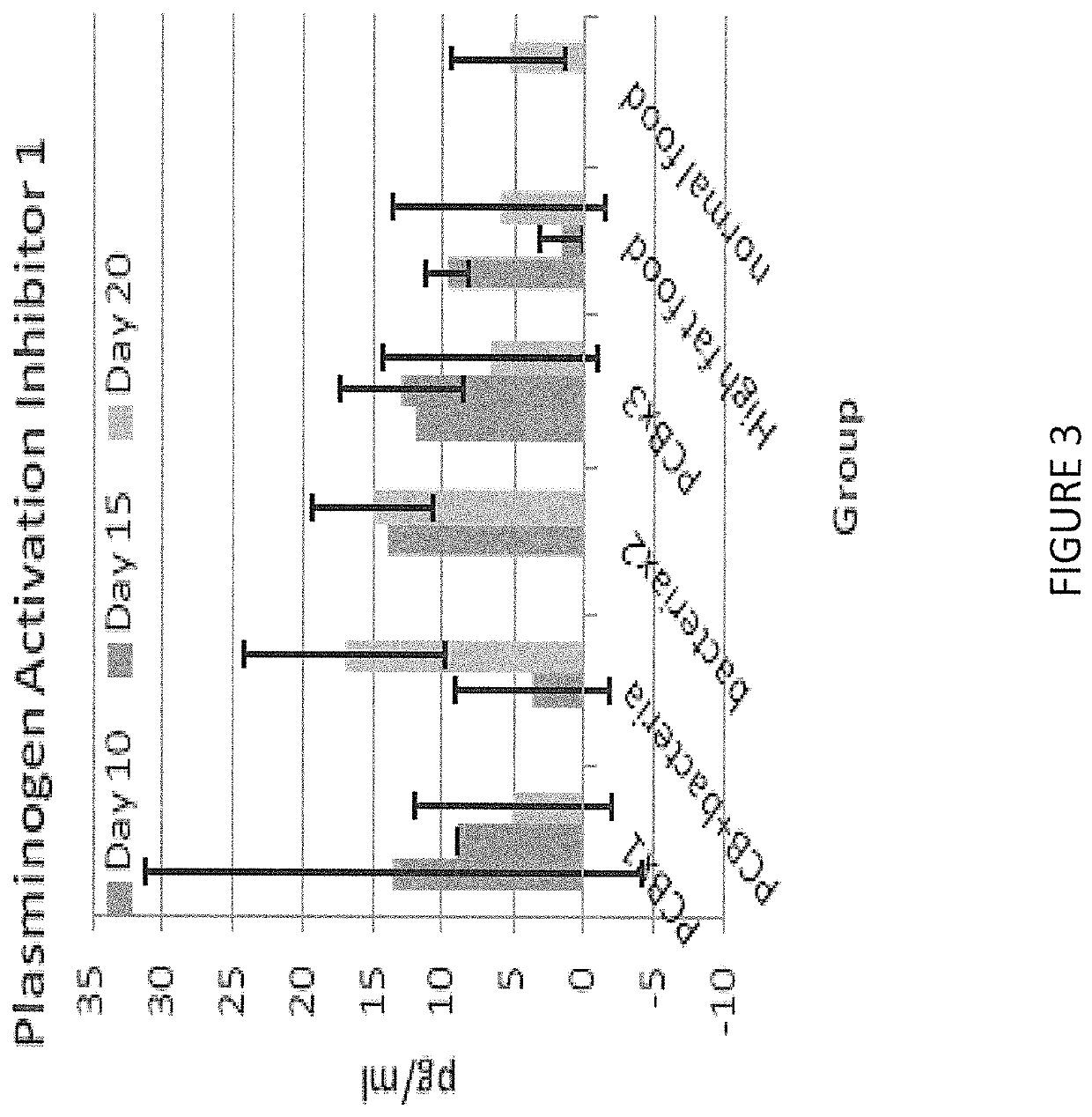Biomarkers of vascular disease
a vascular disease and biomarker technology, applied in the field of vascular diseases or thromboembolism, can solve the problems of dead cells, edema and infiltration of blood debris, excessive fat consumption, etc., and achieve the effects of slowing down clotting, preventing clumping of platelets and clot formation, and preventing clot formation
- Summary
- Abstract
- Description
- Claims
- Application Information
AI Technical Summary
Benefits of technology
Problems solved by technology
Method used
Image
Examples
example 1
[0073]Materials and Methods
[0074]Mice
[0075]For the pilot study, 48 ten week old male C57 / BI6 mice were obtained from Jackson Laboratories. Three mice were raised from 6 weeks on a regular diet and served as controls, and the remaining 45 were raised on a 60% fat diet (D12451, DIO series diet, Opensource Diets). For the bacterial dosage test, 16 ten week old male C57 / BI6 mice were divided into 4 treatment groups and maintained on a normal diet.
[0076]Treatments
[0077]3,3′,4,4′-Tetrachlorobiphenyl (PCB-77) was obtained from Neosyn Laboratories. 100 mg of the dry chemical was suspended in 15.22 ml of corn oil to deliver 150 μmol / kg in 0.2 ml per mouse. Porphyromonas gingivalis 381 (ATCC 33277) was obtained from ATCC. The bacteria were stored frozen prior to use. The bacteria were cultured in multiple sterile tubes in 40 ml of supplemented tryptic soy broth at 37° C. under anaerobic conditions. The cultures were centrifuged, the medium removed, and the samples combined. A 100 μl sample of...
example 2
[0111]Materials and Methods
[0112]A novel model of atherosclerosis in mice was developed, using a high fat diet and administration of a polychlorinated biphenyl (3,3′,4,4′-Tetrachlorobiphenyl; PCB-77) that promotes both obesity and atherosclerosis and the additional oral administration of a bacteria responsible for tooth decay, Porphyromonas gingivalis 381 (ATCC 33277). The objective of this study was to examine the association of biomarkers with the murine model of atherosclerosis in mice treated with a strategy to protect and repair endothelial glycocalyx. Eighty-four (84) ten week old male C57 / BI6 mice were obtained from Jackson Laboratories. Thirty-two mice were raised from 6 weeks on a regular diet and served as controls, and the remaining mice were raised on a 60% fat diet (D12451, DIO series diet, Opensource Diets). 3,3′,4,4′-Tetrachlorobiphenyl (PCB-77) was obtained from Neosyn Laboratories. The dry chemical was suspended in 15.22 ml of corn oil to deliver 200 μmol / kg in 0.2 ...
PUM
| Property | Measurement | Unit |
|---|---|---|
| wavelength | aaaaa | aaaaa |
| temperature | aaaaa | aaaaa |
| thick | aaaaa | aaaaa |
Abstract
Description
Claims
Application Information
 Login to View More
Login to View More - R&D
- Intellectual Property
- Life Sciences
- Materials
- Tech Scout
- Unparalleled Data Quality
- Higher Quality Content
- 60% Fewer Hallucinations
Browse by: Latest US Patents, China's latest patents, Technical Efficacy Thesaurus, Application Domain, Technology Topic, Popular Technical Reports.
© 2025 PatSnap. All rights reserved.Legal|Privacy policy|Modern Slavery Act Transparency Statement|Sitemap|About US| Contact US: help@patsnap.com



